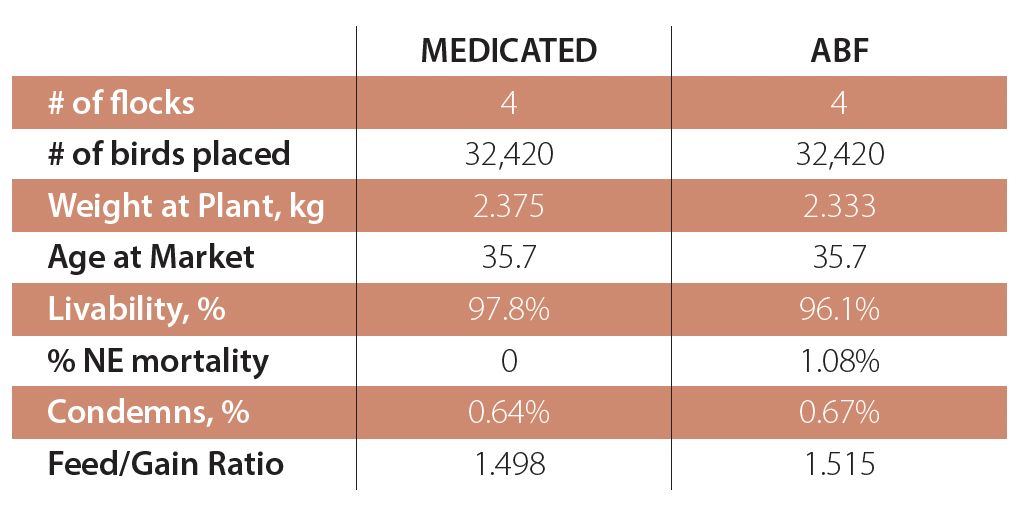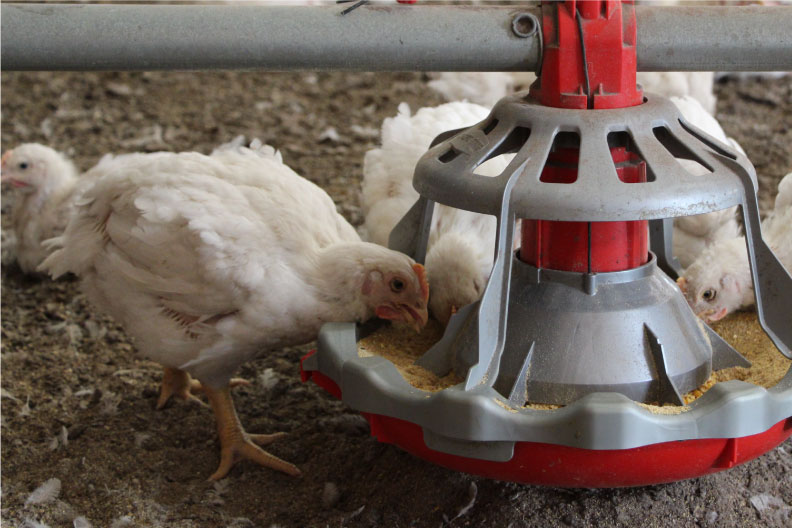By Ryan Snyder, Ph.D.
Poultry Production Improvement Specialist,
Grand Valley Fortifiers
In 2019, the Chicken Farmers of Canada updated and announced an Antimicrobial Use Strategy that desired to eliminate Category I, II, and III antibiotics used for disease prevention in broiler chicken production. Category I antibiotics were eliminated from chicken production at the end of 2013. Category II antibiotics, which included virginiamycin, were subsequently removed from chicken production by the end of 2018. Finally, category III antibiotics, which essentially only includes bacitracin, were scheduled to be removed from production at the end of 2020. However, due to the COVID-19 pandemic, the decision was delayed because of the inability for stakeholders to come together to discuss the readiness of the industry. Such a monumental change will certainly challenge the broiler industry and require some new innovation.
Antibiotics have long been referred to as a “silver bullet”. They have worked very reliably for every producer for many years. As we look to the future and the removal of these effective products, we continue to search for alternative products and technologies to ensure production and profitability are maintained if not advanced. In the post-antibiotic world of broiler production, the majority of these alternative products continue to be used in the feed, although some water additives have been marketed. There are a variety of different product types, each offering a unique mode of action in how they benefit the chicken’s health. Finding the right combination of products to include in the feed is likely to provide the most reliable success. The two main diseases that antibiotic free (ABF) chickens are at risk of contracting include necrotic enteritis and coccidiosis. While combating these two pathogens is the key focus in ABF production, establishing and maintaining good gut health is the place to start.
The team at Grand Valley Fortifiers has continuously been researching new products that promote gut health. We have been developing the program for several years now and have found a line up of products that have shown significant promise. These products include essential oils and plant extracts that have the properties which promote a strong, healthy gut in the chicken, which is key to fighting off coccidiosis and necrotic enteritis.
Table 1. The performance of broilers offered medicated and non-medicated (ABF) feeds.

Manufacturers of these products typically perform their own research to aid in marketing their products. However, the GVF Poultry team has been keen to collect some of our own data on these products. Since 2018, a series of trials were run with Dr. Lloyd Weber to test how these products compare to a conventional feeding program. The objective was to demonstrate that these products can achieve similar performance to the medicated program that most broiler producers are used to today. Three of the trials were conducted between May and August of 2020, each with some specific set-up that is outside the scope of this review. The performance data from the four flocks is summarized in Table 1. A minimal reduction in performance was detected. Some necrotic enteritis associated mortality was found in the ABF group, but was comparable, if not less than what would be experienced in a typical ABF program.
During these trials, Drs. Lloyd Weber, Martin Clunies, and Ryan Snyder performed regular health checks by observing various part of the chickens’ intestinal tract for clues as to how effective the products were. Through these observations, very little difference was found between the chickens that were provided medications compared to the ABF fed birds, indicating that the ABF program provided the necessary components for the birds to fight any infection before the bacteria or cocci could have an impact.
Grand Valley Fortifiers is dedicated to leading the industry in the research and development of these and new products to ensure the success of our customers as the industry continues to evolve. Now, with the encouraging results of these preliminary data, we are excited to continue conducting further research to trial and hone these products to ensure they will be successful for all operations.
This article was written for the Spring 2021 Poultry Grist. To read the whole Poultry Grist, click the button below.

